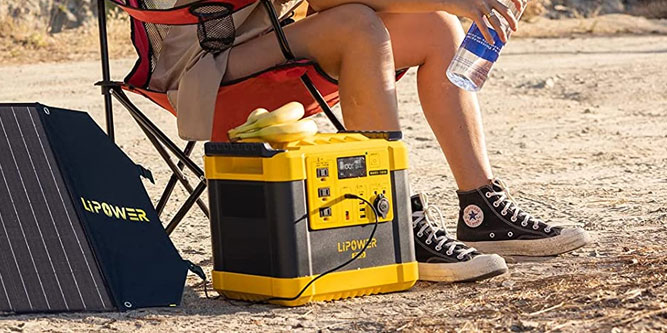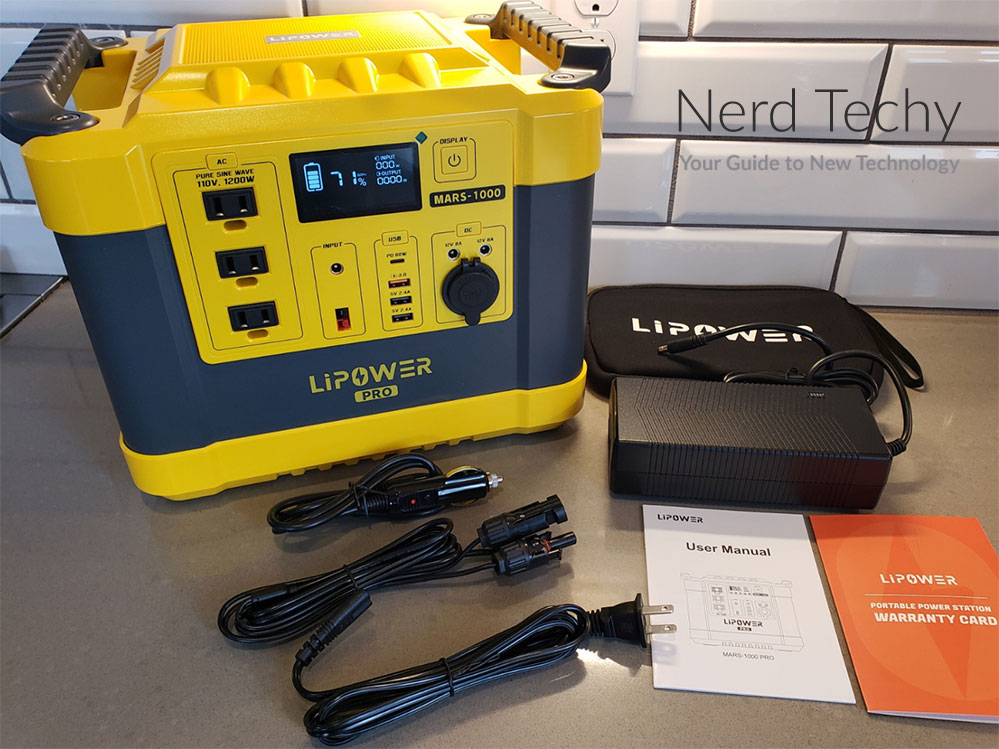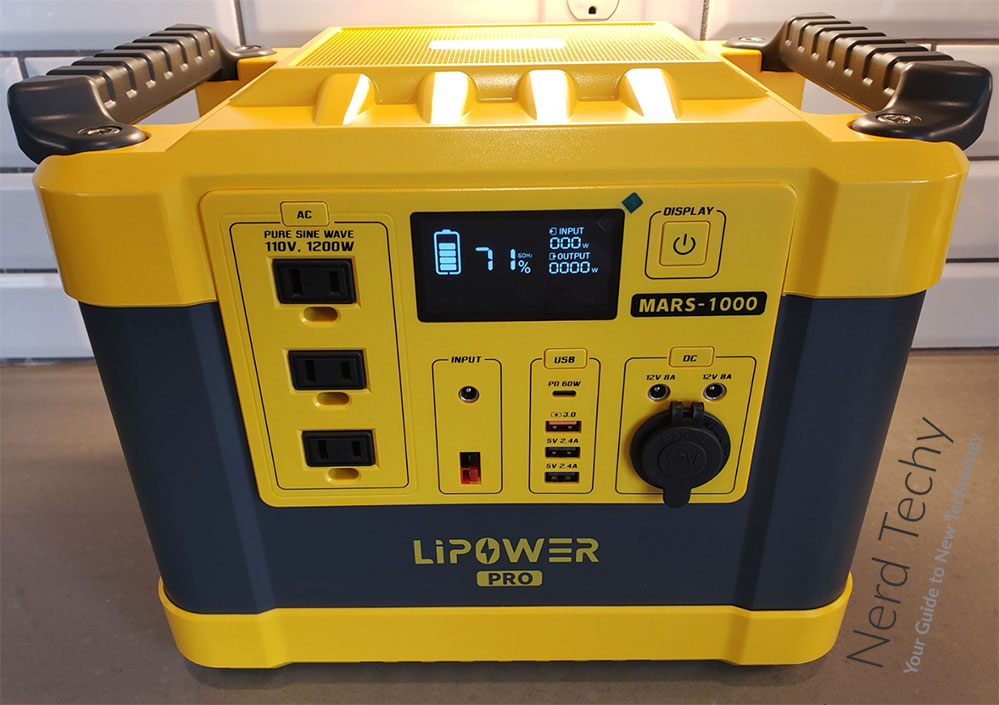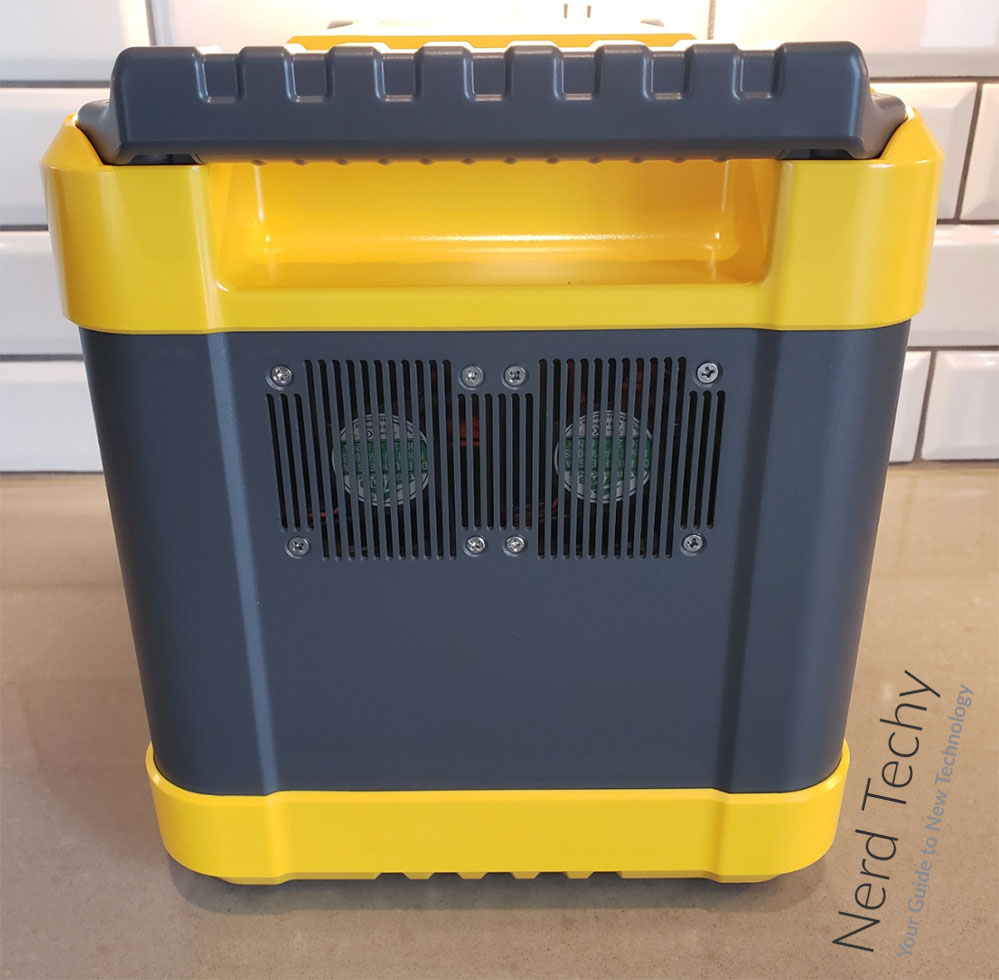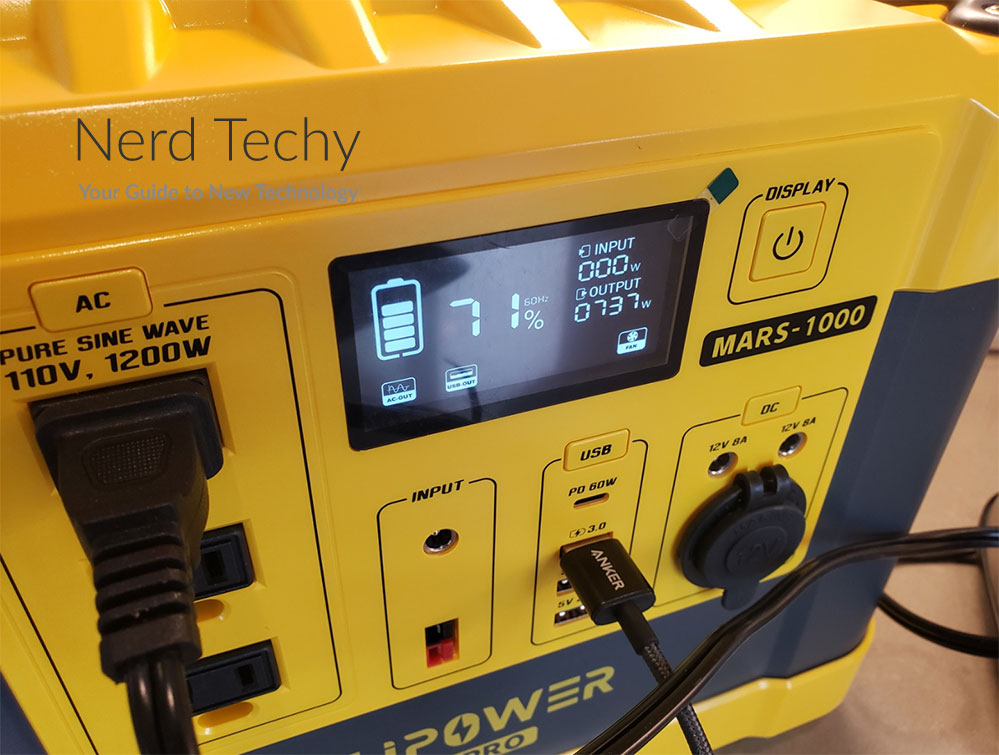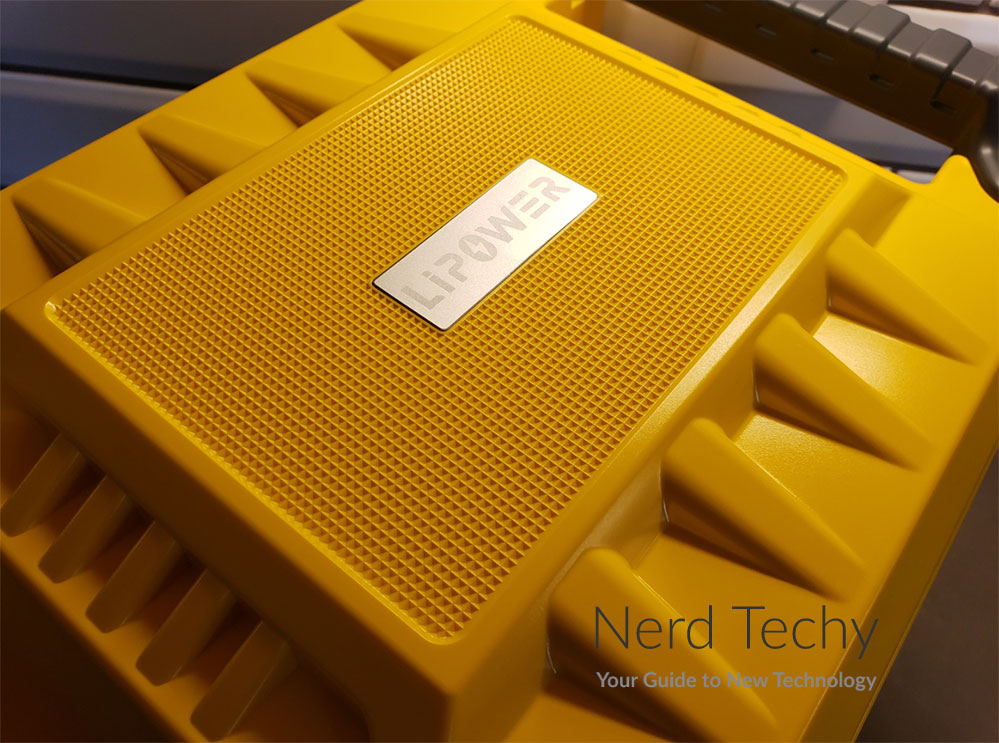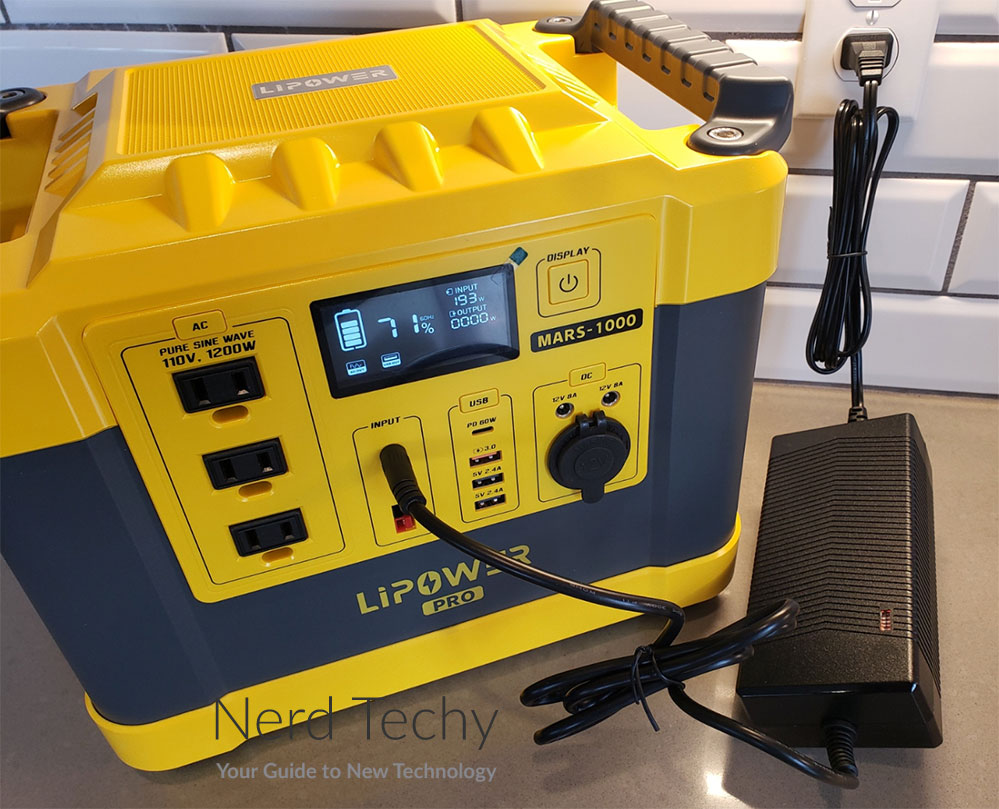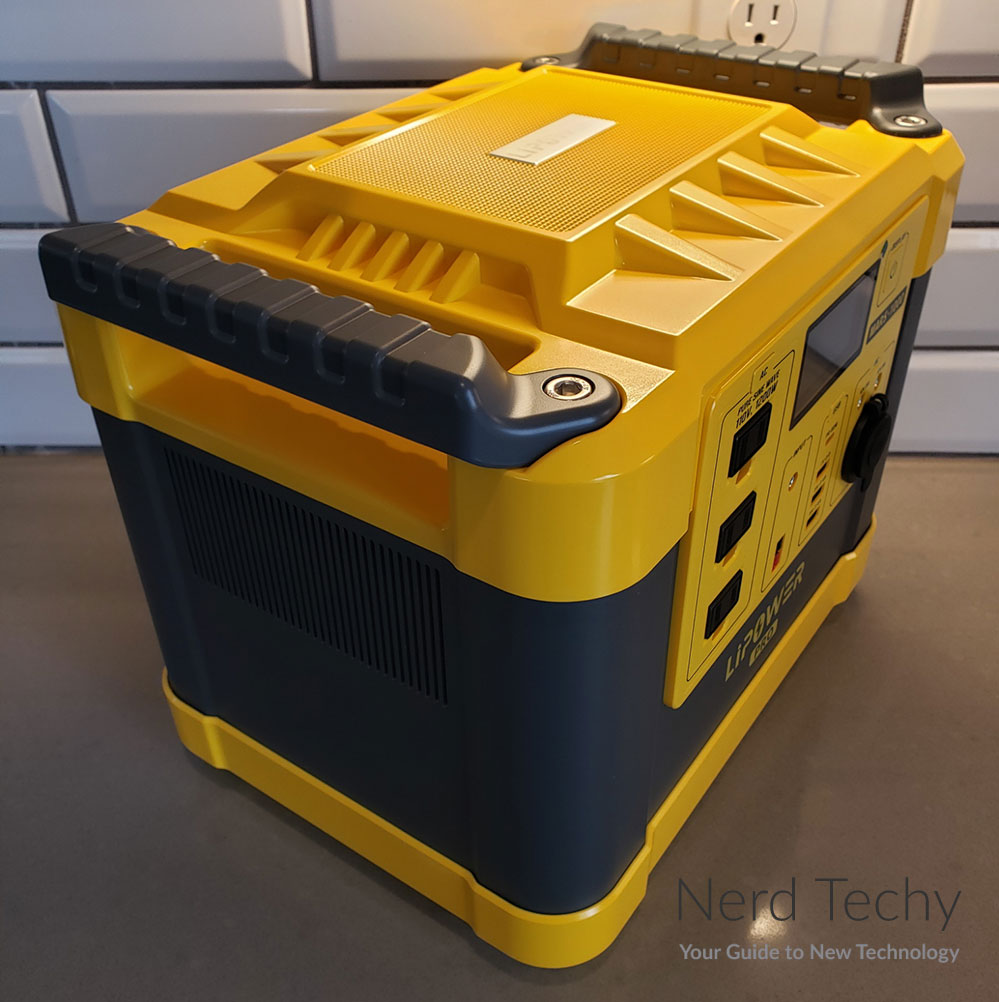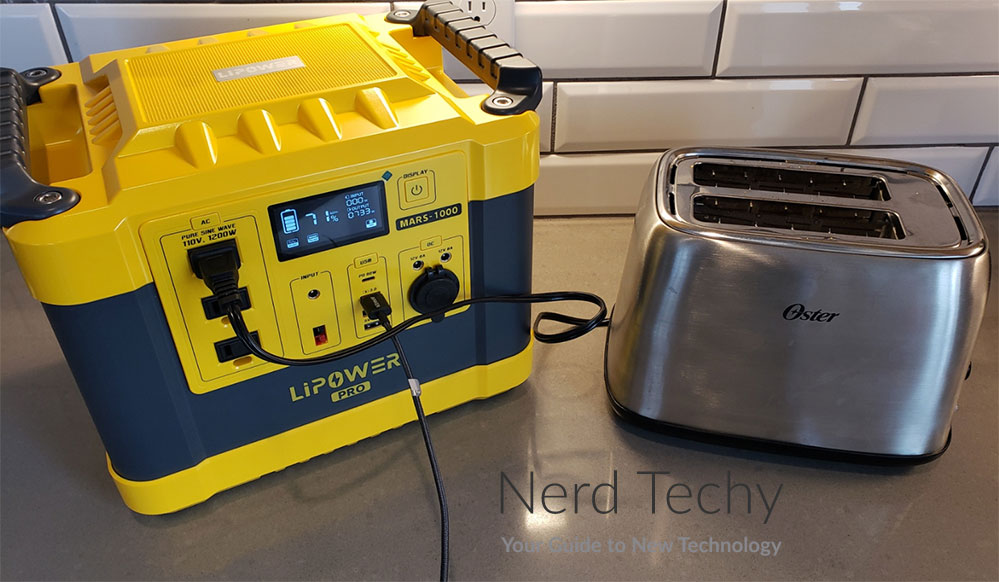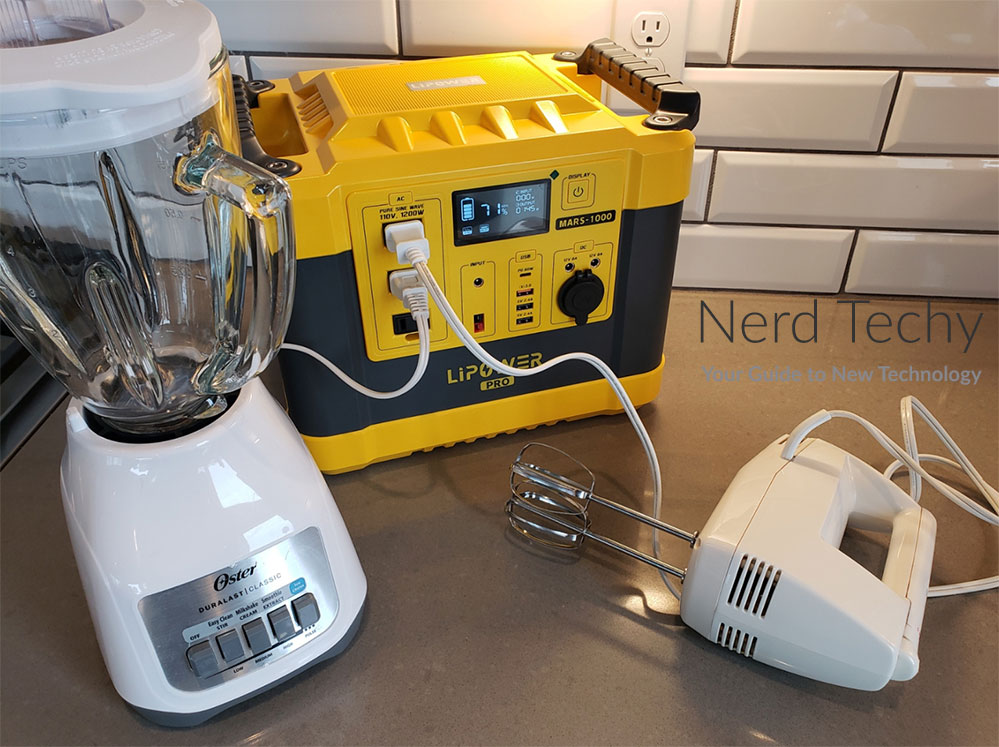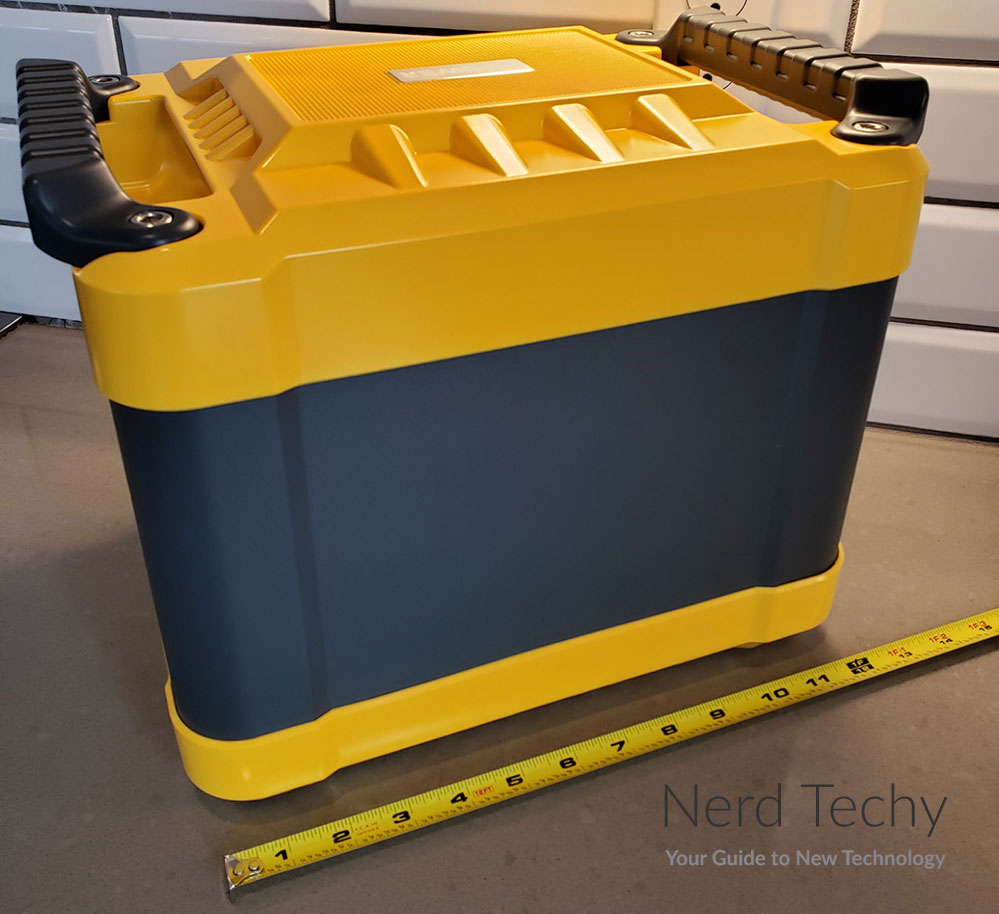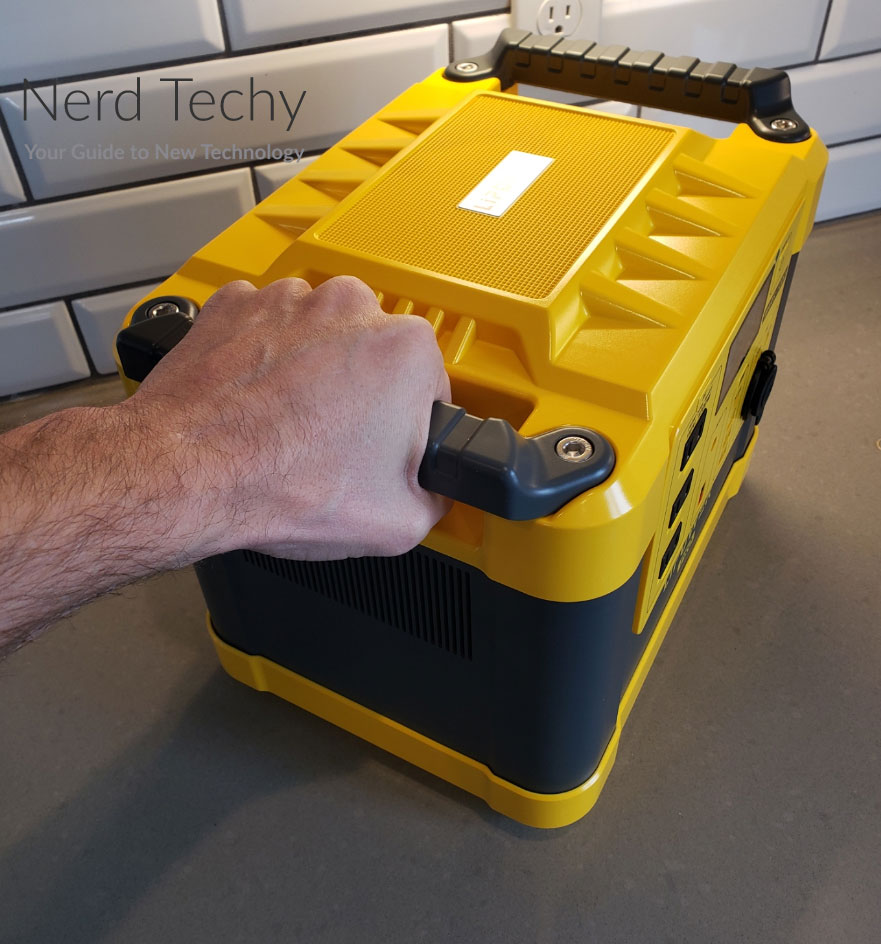In modern life, we rely heavily on our electronics. For proof of this, look no further than your smartphone. Think of how many apps you use, and what you use them for. Without your phone, you’d lose your GPS app, and you’d have to drive to the bank instead of banking remotely. And those are just a couple of your phone’s functions. The list goes on and on.
When the power goes out or you go off the grid, you still want some way to charge your devices. You may also have other power needs. Maybe you want to run an electric griddle, or you rely on a CPAP machine to breathe through the night. In those situations a backup power station can be incredibly helpful.
Today, we’ll be reviewing the LIPOWER MARS 1000 Pro. This power station has a large, 1,120 Watt-hour (Wh) capacity, and is capable of powering 10 devices simultaneously. But what else is it capable of, and is it the right power station for you? We’ll need to dig a little bit deeper, and find out what it has to offer. Let’s get started!
Design and Durability
The LIPOWER MARS 1000 Pro has a silver-grey housing, with black top and bottom portions. An alternative version is available in blue. The material is plastic, although the top and bottom are fat, beefy, and slightly rubberized. There’s also an aluminum inner frame, so you’re looking at a machine that can take a real beating.
The overall size is 12.6 inches wide, 10.2 inches deep, and 9.1 inches high. That’s pretty compact for a power station, and it’s correspondingly lightweight. At 26.45 pounds, you can carry it around with one hand. Or you can carry it with both hands, which will probably be more comfortable with the sturdy handles at the top left and right. They’re nice and wide, with a deep cutout behind them to accommodate larger hands. At the same time, they’re not too fat for smaller hands to grip.
The right and left sides of the housing are vented. You’ll see two sets of vertical louvers, for air to flow through the housing. There’s also a pair of internal cooling fans that speed things along, but they only turn on sometimes. At normal room temperature, this seems to happen around the 500 to 600-watt range. And even when the fans do kick in, they’re relatively quiet. The fan noise won’t interfere with conversations or watching a movie.
If we had any concerns about durability – we didn’t – they’d have been allayed by LIPOWER’s warranty. They back their power station with 24-month coverage on parts and labor. That’s more than enough time to ensure it’s free of defects.
Ports and Display
The power ports and outlets are all located on the front of the housing. At the left, there’s a set of three grounded AC ports stacked one over the other. Above them is a black plastic button that says “AC” in white letters. This button toggles the power outlets on and off.
At the top center is a bright LCD display. This display shows a battery bar graph, as well as the battery percentage in large numbers. To the right of this information is the input and output voltage, displayed in smaller numbers. Across the bottom of the screen is a series of indicator lights for active ports and fans. The pain power button is just to the right of the screen.
Beneath the screen to the left, there’s a pair of ports for charging the power station itself. The top port is a barrel-style DC port, and the bottom accepts a standard solar PV cord.
To the right of the charge ports but still beneath the display, you’ll find the USB ports. These are stacked in a column, with a USB Type-C port at the top. Moving down, there’s a USB Type-A QC port with an orange inner tab to mark it out. The last two ports are ordinary USB Type-A ports with a black inner tab. Like the AC outlets, there’s a control button at the top to power the whole group.
At the bottom right is a DC automotive charging port, with two barrel-style DC ports above it. These ports come with their own separate control button. As a result, you can turn each group of outlets – AC, USB, and DC – on or off as needed. By powering off unused outlets, you save a small trickle of power.
Battery Capacity and Recharging
The LIPOWER MARS 1000 Pro has a capacity of 1,120Wh, which is equivalent to 300,000mAh. If you’re not intimately familiar with electronics, those numbers may not mean much.
To put that in perspective, the base model iPhone 14 has a battery capacity of 3,279mAh. Allowing for inefficiencies, you could charge it around 80 times before you drained the power bank. If you have a 60-watt CPAP machine – relatively large – it will run for about 18 hours. That’s two full nights of sleep with a little bit extra. That said, there are limitations. Run a 1,200-watt induction cooktop, and you’ll get about an hour of use before the battery runs dry.
When that happens, there are three ways to recharge. The fastest method is to use your home’s wall outlet. Using the AC power cord, you’ll be able to fully charge a dead battery in around 5½ hours. You can also charge from your car outlet, although that will take longer. Depending on your car battery and alternator, the power station will charge in 9 to 11 hours.
The third option is solar charging. You can order the LIPOWER power station with one or two 100-watt solar panels. Assuming you’re using both panels, you can theoretically charge the battery in as little as 5 hours. In practice, 7 to 9 hours is more realistic. But it all depends on how much direct sunlight you’re able to get. An AC charging cable, DC automotive adapter, and solar cable are all included in the package.
One thing that disappointed us was the absence of pass-through charging support. This means that the power station can’t be used while it’s charging. It may or may not be a problem, depending on your use case. But it could be a problem if you’re using it on a daily basis via solar for several days. You’ll effectively be limited to using the power station at night.
Charging Capabilities
A good power bank needs more than a powerful battery. It also needs to be able to deliver enough current to power your devices. In this case, the LIPOWER power station provides a maximum current of 1,200 watts. By comparison, a standard home power outlet can provide around 1,500 watts.
As a result, you’re looking at a suitable power supply for small to medium-wattage electronics. To return to an earlier example, you could even run a 1,200-watt camp griddle without any problems. You just couldn’t power any other devices at the same time, since you’d be using the maximum wattage. We tested it with a blender, toaster and other power intensive small appliances. It had no difficulties with these.
That said, most everyday electronics draw far less than that. Your laptop most likely charges at somewhere between 40 and 90 watts. The fastest-charging smartphones top off at around 36 watts. That’s the same wattage you use to charge a typical drone battery. CPAP machines draw between 30 and 60 watts. So depending on what you’re doing, you could easily use all the outlets and charging ports simultaneously.
The AC outlets are grounded, and provide a standard North American 110-volt current. All of the DC ports provide standard 12-volt DC power.
The USB ports are a little more interesting. The Type-C port at the top provides 60 watts of PD current. That’s enough to charge most PD-powered devices. However, some large laptops will require a higher wattage to use them while they’re charging. In that case, you’ll need to use an appropriate power brick and plug into one of the AC power ports.
The orange-tabbed USB Type-A port provides up to 18 watts, and uses the QC 3.0 charging protocol. This allows for faster charging on many Android phones. The other two USB ports provide a standard 12-watt current.
Safety and Extras
Before we wrap up, there are a few key features that are worth mentioning. To begin with, the LIPOWER power station produces pure sine wave AC power. This is the same type of power you get from your wall outlet. Unlike power from a typical inverter, it’s safe for sensitive devices like CPAP machines. That’s not always the case for power stations, which can sometimes damage your electronics.
In addition, LIPOWER has built in a battery management system (BMS) with a number of safety protections. The system will immediately stop charging in the event of a short circuit, overcurrent, over-voltage, or overload. It also has a thermal sensor, which shuts down charging for safety reasons if the temperature exceeds 104 degrees.
We did have one minor complaint, though. The AC power outlets aren’t actually connected to AC neutral. Because of all the protection features, this isn’t a safety issue. However, if you plug in a device with a GFCI plug, the GFCI will trip. In other words, you’ll need to find a different way to power your hair dryer or other GFCI devices.
Final Verdict
The LIPOWER MARS 1000 Pro Portable Power Station is one of the better-designed power stations on the market. With its sturdy build and ergonomic handles, it’s both portable and durable. The power outlet layout is convenient, with everything easy to access on a single panel.
The capacity of 1,120Wh is impressive given the small size of the unit. We also appreciated the charging capabilities. 1,200 watts might not be all that much compared to your home outlets. But for something you can take with you on the road, you’re looking at an excellent performer.
Better yet, the AC outlets provide pure sine wave power for your sensitive devices. Whether you’re camping or you need an emergency backup system, this power station is a winner.
Meet Ry, “TechGuru,” a 36-year-old technology enthusiast with a deep passion for tech innovations. With extensive experience, he specializes in gaming hardware and software, and has expertise in gadgets, custom PCs, and audio.
Besides writing about tech and reviewing new products, he enjoys traveling, hiking, and photography. Committed to keeping up with the latest industry trends, he aims to guide readers in making informed tech decisions.

